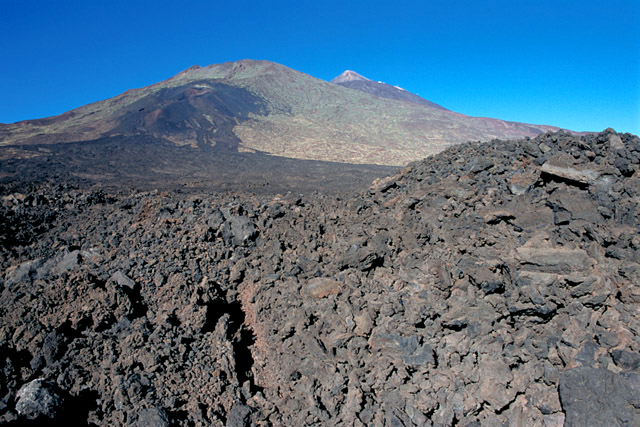Francis Abbott, director of Oceanic Research & Publishing Ltd., has been kind enough to provide VW with some beautiful photographs of Canary Island's volcanoes and volcanic features. To see more of his work, visit Oceanic Research and Publishing

Caldera de Bandama, Gran Canaria. The Caldera de Bandama is one of a number of small calderas to found on Gran Canaria. This caldera of 1km in diametre and 200 metres depth has been dated at 20 BC. Originally a double cinder cone, the caldera was formed later.

Caldera de los Marteles, Gran Canaria. Situated close to the summits of Gran Canaria (Pico de Las Nieves) and at the head of the Guayadeque canyon, the Marteles caldera was formed some 100,000 years ago by a phreatomagmatic explosion.

Caldera del Corazoncillo, Lanzarote, Canary islands. The Caldera del Corazoncillo is located close to the Timanfaya volcano and is one of a number of strombolian cones to have been formed during the 1730 to 1736 eruptions

Chinyero volcano, tenerife, Canary Islands. The "Volcan Chinyero" was the last eruption to have occured on the island of Tenerife in recent history. The Strombolian type eruption of 1909 lasted for 10 days emiting basaltic pyroclastic material and aa lava flow.

Pico Viejo; Tenerife, Canary Islands. Crater of the Pico Viejo (Old peak) volcano. Pico Viejo last erupted in 1798, an eruption lasting 92 days, during which basaltic lava flows and pyroclastics were emited from a flank fissure vent.

Duraznero volcano, La Palma, Canary Islands. The Duraznero volcano forms part of the larger San Juan Volcano, a fissure vent system situated along the summits of the "Cumbre Vieja" the island's southern half and most active volcanic edifice.

Hoyo Negro crater, La Palma, Canary Islands. The Hoyo Negro (Black Hole) forms part of the San Juan Volcano, a fissure vent system situated along the summits of the "Cumbre vieja" the island's southern half and most active volcanic edifice.

Montaña del Señalo, Lanzarote, Canary Islands

Mount Teide, Tenerife, Canary Islands. Mount Teide stratovolcano is the world's 3rd largest oceanic island volcano reaching 3718 metres. In the foreground iron rich basaltic cinders have oxidised to give the reddish and brown colours.

Mount Teide summit crater, Tenerife, canary Islands. Spectacular views of the Las Cañadas caldera from the summit of Mount Teide stratovolcano at 3718 metres altitude. The small 80 metre wide crater has hundreds of active fumaroles emitting Sulfurous water vapor.

Canary Islands. Strange shapes created by the erosion of pumice layers, originating from explosive eruptions of the ancient "Cañadas" stratovolcano, which is believed to have reached 6000 metres altitude.

Pico Viejo volcano, Tenerife, Canary islands. The Pico viejo volcano forms part of the 3718 metre high Mount Teide stratovolcano seen here in the background. situated just to the west of the main peak, Pico Viejo last erupted in 1798.

Roque Nublo, Gran Canaria, Canary Islands. The Roque Nublo (centre of image) once revered to by the ancient Guanche population and today visited by thousands of tourists each year is the emblematic symbol of Gran Canaria.

Roque Nublo, Gran Canaria, Canary Islands. The Roque Nublo once revered to by the ancient Guanche population and today visited by thousands of tourists each year is the emblematic symbol of Gran Canaria.

The Three Kings. Gran Canaria, Canary Islands. The Three Kings are one of Gran Canaria’s most dramatic and beautiful natural phenomena. Resulting from extensive erosion of differing volcanic materials, the upper monolith is composed of breccia-type pyroclast.

Timanfaya volcano, Lanzarote, Canary islands. The Timanfaya is the largest of a number of volcanic cones to be found in the National Park of the same name. The largest historical eruptions within the Canary islands took place between 1730 and 1736.
VW again thanks Francis Abbott, director of Oceanic Research & Publishing Ltd. To see more of his work, visit Oceanic Research and Publishing